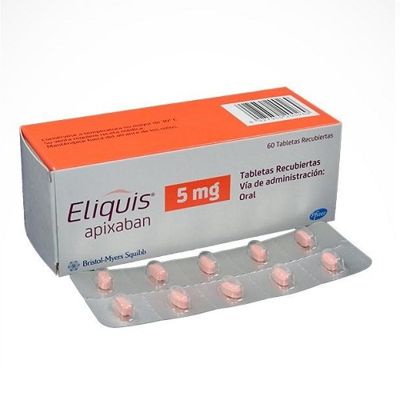The management of conditions such as atrial fibrillation, deep vein thrombosis, and pulmonary embolism poses significant challenges. Anticoagulation therapy plays a crucial role in preventing blood clot formation and reducing the risk of associated complications. Among the array of anticoagulants available, Eliquis stands out as a leading medication renowned for its efficacy, safety profile, and convenience of use. In this comprehensive guide, we delve into the intricacies of Eliquis, exploring its mechanism of action, therapeutic benefits, usage guidelines, and potential side effects.
Understanding Eliquis:
Eliquis, with its generic name apixaban, belongs to a class of medications known as direct oral anticoagulants (DOACs). It acts by inhibiting factor Xa, a key component in the coagulation cascade, thereby preventing the formation of blood clots. Unlike traditional anticoagulants such as warfarin, Eliquis does not require frequent monitoring of coagulation parameters, offering greater convenience and predictability in dosing.
Therapeutic Benefits of Eliquis:
-
Stroke Prevention in Atrial Fibrillation (AFib): Atrial fibrillation, characterized by irregular heart rhythm, poses a significant risk of stroke due to the formation of blood clots in the atria. Eliquis has demonstrated superior efficacy in reducing the risk of stroke and systemic embolism in patients with AFib compared to warfarin, with a lower incidence of major bleeding.
-
Treatment and Prevention of Venous Thromboembolism (VTE): Deep vein thrombosis (DVT) and pulmonary embolism (PE) are serious complications associated with venous thromboembolism. Eliquis is indicated for both the treatment and prevention of recurrent DVT and PE, offering comparable efficacy to traditional anticoagulants with a reduced risk of bleeding complications.
-
Convenience of Use: Eliquis is administered orally in fixed doses without the need for routine coagulation monitoring or dietary restrictions. This simplified dosing regimen enhances patient adherence and reduces the burden of frequent clinic visits associated with traditional anticoagulant therapy.
Usage Guidelines for Eliquis:
-
Dosage: The recommended dosage of Eliquis varies depending on the indication. For stroke prevention in AFib, the standard dose is 5 mg taken orally twice daily, while for the treatment of DVT or PE, an initial dose of 10 mg twice daily for seven days followed by 5 mg twice daily thereafter is recommended. Dosage adjustments may be necessary based on individual patient characteristics and renal function.
-
Renal Impairment: Eliquis should be used with caution in patients with renal impairment, as the clearance of the drug may be reduced. Dose adjustments are recommended in individuals with creatinine clearance below 15 mL/min or those receiving dialysis.
-
Drug Interactions: Eliquis may interact with certain medications that affect coagulation or metabolism, such as antiplatelet agents, nonsteroidal anti-inflammatory drugs (NSAIDs), and strong inhibitors or inducers of cytochrome P450 enzymes. Healthcare providers should carefully evaluate potential drug interactions before initiating Eliquis therapy.
Potential Side Effects of Eliquis:
While Eliquis is generally well-tolerated, like any medication, it may cause certain side effects in some individuals. Common side effects include bleeding, bruising, gastrointestinal discomfort, and headache. Serious bleeding events, though rare, may occur and require prompt medical attention. Patients should be educated about the signs of bleeding and instructed to seek immediate medical assistance if symptoms such as severe or prolonged bleeding, dizziness, or weakness occur.
Conclusion:
Eliquis represents a significant advancement in anticoagulation therapy, offering a potent and convenient option for the management of atrial fibrillation, venous thromboembolism, and related conditions. With its predictable efficacy, favorable safety profile, and simplified dosing regimen, Eliquis has revolutionized the landscape of cardiovascular care. However, healthcare providers must exercise caution in prescribing Eliquis, carefully assessing patient suitability, monitoring for potential drug interactions, and educating patients about the importance of adherence and vigilant monitoring for bleeding complications. By harnessing the therapeutic benefits of Eliquis judiciously, clinicians can optimize patient outcomes and improve the quality of life for individuals at risk of thrombotic events.


No comments yet